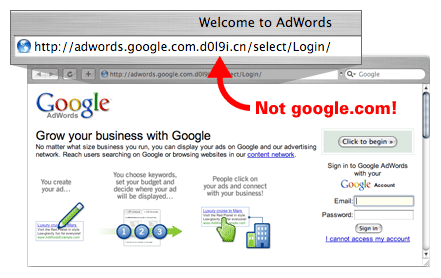Tabnabbing : Be Safe from Black Hats
I.T world.. !!A lot can happen over internet..!!
While we can have infinite tasks automated and done with ease with the help of internet, deep down there, are a group of black hats (the hackers) who mis-use the internet flexibility for malicious tasks.
Here is a brief introduction about Tabnabbing & how some measures to stay away from it.
Tabnabbing : It is formally named by Mr.Raza Askin in 2010, and is formally defined as “computer exploit and phishing attack, which persuades users to submit their login details and passwords to popular Web sites by impersonating those sites and convincing the user that the site is genuine.”It is a new type of phishing attack, and generally the Non-IT users or users who surf little carelessly get suffered. Sometimes even the well aware users get affected by such attacks.
Generally what happens is that while users are busy surfing net, we generally have a habit of keeping multiple tabs open for multiple purposes: example Email Accounts, Social Networking Accounts, Bank Accounts etc. And it happens that certain times session gets out and we have to re-login again, or sometimes the user may tend to ignore or forget that which sites he/she has logged-in already or which are just opened. The Black hats mis-use this tendency of internet users and retrieve information about most used websites of a user with the help of cookies.
The hackers than play with small favicons, and render a look-alike page of original website asking for login credentials, which a user without much noticing provides and immediately his/her account is compromised.
For example, see the image below:
It is a manipulated page, which is rendered as a Google Account, but is not actually the Google connection. The phishing can also be done in following way:
This phishing attacks are highly dangerous, but can be taken care of by taking certain precautionary measures while using internet. The recommended measures are :
- No not open more than 3-4 Tabs unnecessarily in the same window, so as to minimize confusion creation probability.
- Always use https connections: Play with settings of accounts and you can find the option to enable HTTPS surfing mode.
- Always use updated browsers, as they keep on adding security patches.
- Always close the windows after the work is over, do not keep them open, and if you want to again use them, than go for fresh connection, do not re-login, specially for banking websites.
- Always look for locked/padded icon in the browser’s display menu.
- Incase if you find any unexpected behavior : please close the window, shut down the internet and clear the cookies.
Stay Alert!! Stay Safe 🙂
-Deep S.Bajaj


